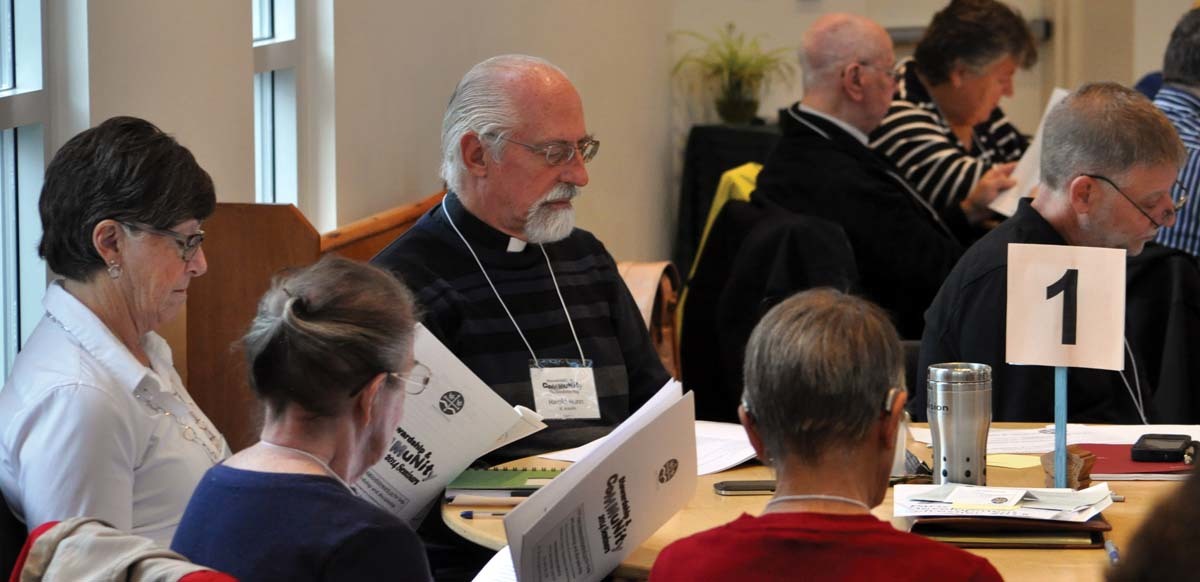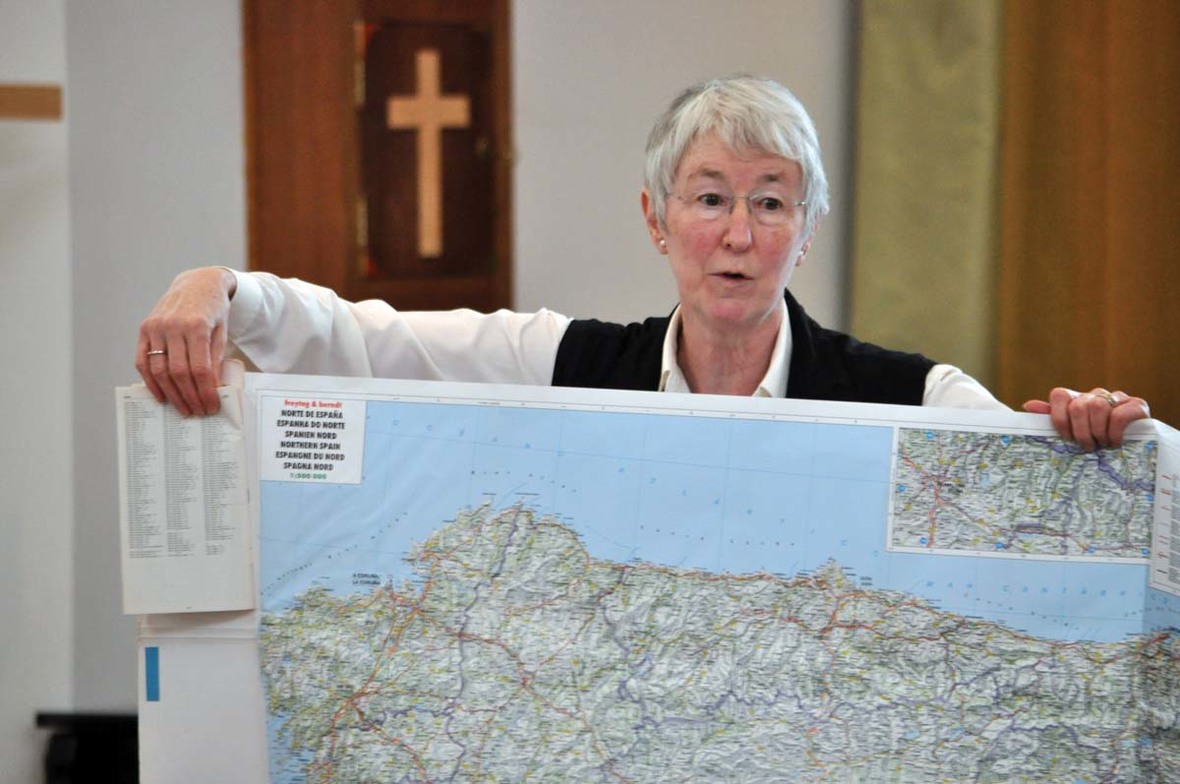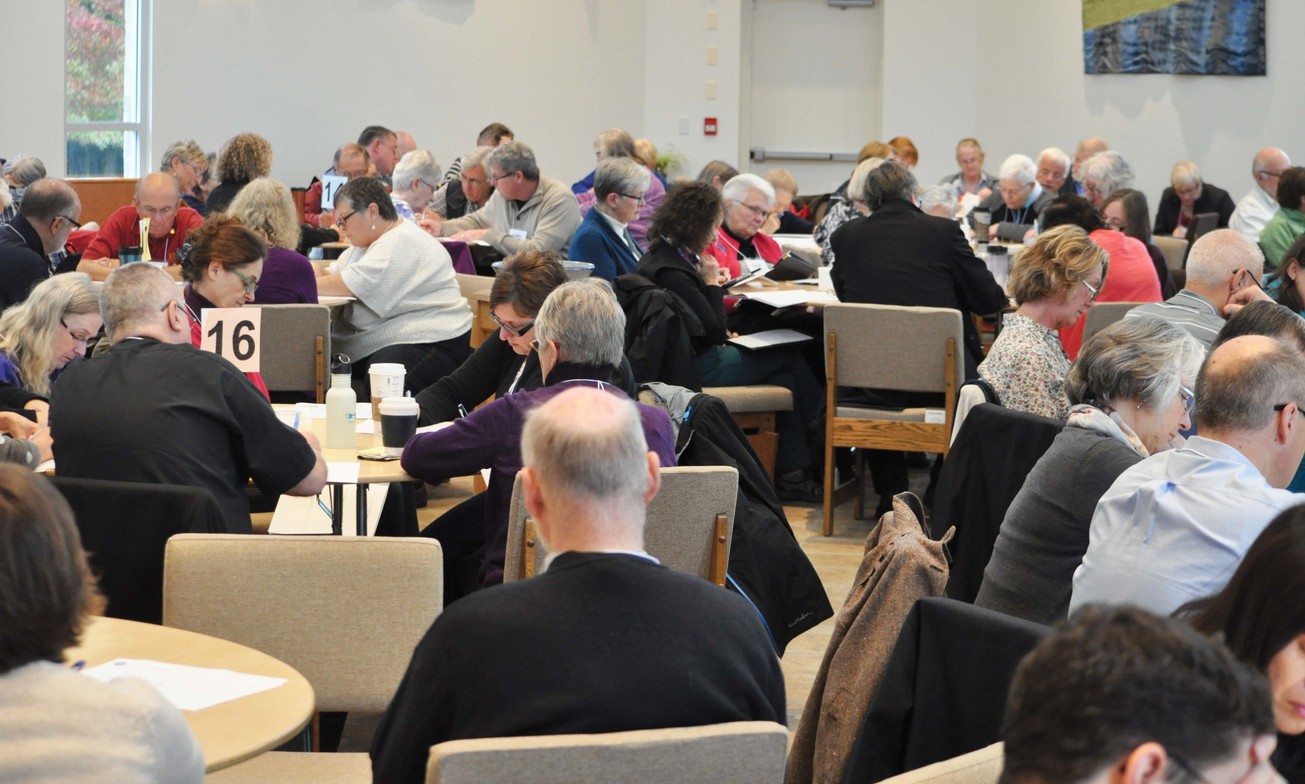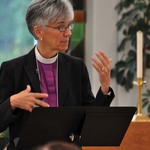On Saturday, October 18th, 130+ people joined in community at St. Dunstan’s Anglican Church in Aldergrove for a workshop titled, Stewardship in Community: The Benedictine Way. The subtitle read, Resources for Creating a Pathway of Life. I try to take the glass-half-full track. “Now, how hard can that be, really?” Our day was spent answering that question and learning about tools for creating a pathway of life.
Our facilitators for the day were Bishop Melissa and the Reverend Dr. Marilyn Hames, Honorary Assistant at St. Philip Dunbar. Bishop Melissa is an accomplished facilitator from her career in the corporate sector. Marilyn’s background includes engineering and research, and she is a priest as well as a spiritual director. We were in good hands!
Following Morning Prayer honouring St. Luke, our Bishop spoke to us about how monasticism is simply living in a way that ensures that our core beliefs are expressed in all we do. Our work is an expression of our beliefs. Our play is aligned with our beliefs. Our leisure time reflects our beliefs. The decisions we make in a day include consideration of our beliefs. The term “rule” sounds limiting and restricting, but work through the process of planning your rule of life, and you will find that they are simply guides. Like signs on the roadside as you travel, these rules keep you safe, reduce anxiety and keep you on the path to your destination.
The Benedictine way includes three cardinal rules:
• Stability – taking stock and maintaining balance in life
• Conversion of life – adjusting your direction as necessary so that you are always turned to Christ
• Obedience – to the pathway of life in Christ that you have promised
Our Bishop reminded us that monasticism isn’t an escape from reality; it simply fills time with awareness of God. Creating a rule of life is a pragmatic way to stay in tune with God in our lives. It encourages life balance; an integrated whole of body, mind and spirit. A rule of life is about listening to God in all that we do, with humility and care and patience.
We spent some time at our tables answering questions about what stability, conversion of life and obedience looked like in our lives. We were asked to look at what we are doing, what we will commit to in the future, and where we could expand the horizons of our lives and explore where Christ is nudging us. We were advised to be realistic in each of these areas; otherwise, they might go the way of many New Year’s resolutions!
Our workbook provided and created by the workshop facilitators with substantial assistance from synod staff, proved to be a great inspiration for thought, and it will be a handy tool for me to be pulled off the bookshelf again and again as I revisit and update my personal Pathway for Life in the future. In fact, Rev. Marilyn Hames reminded us that the whole seminar was a toolbox full of information, ideas and prompts to help us maintain a Pathway for Life. We continue to grow all of our lives; we are all on a journey, though we will take different paths. The Bible is filled with journey stories, she reminded us; the most important journey is the one to the altar to receive Christ. We are on the pathway of life whether or not we are conscious of it. Any time is a good time to take stock, make a map, refine the details and continue on our journey refreshed, enlivened, and with the end goal in mind. During this section of her presentation, Rev. Hames unfolded a rather large road map and then refolded it in order to illustrate the map metaphor.
I’m a “post-BCP” Anglican, and so I have very little experience with the Book of Common Prayer. But I was so pleased when Rev. Marilyn referred us to page 555 in the BCP, noting that the concept of developing a Rule of Life isn’t a new one to the Anglican Church. Sure enough, when I got home from the workshop, I got out the 1962 BCP, and there it was:
Every Christian man or woman should from time to time frame for himself a RULE OF LIFE in accordance with the precepts of the Gospel and the faith and order of the Church; wherein he may consider the following:
The regularity of his attendance at public worship and especially at the holy Communion.
The practice of private prayer Bible-reading, and self-discipline.
Bringing the teaching and example of Christ into his everyday life.
The boldness of his spoken witness to his faith in Christ.
His personal service to the Church and the community.
The offering of money according to his means for the support of the work of the Church at home and overseas.
Here is a wonderful place to start with a personal rule of life. If you sat down and determined how you might contribute in a realistic, meaningful way to each of the points above, and then followed through, you have made a monastic commitment to our Anglican life together!
In our Benedictine workshop, we worked through the steps to devising a Pathway for Life in this order:
1. Think about what is important to me – life purpose, joy and satisfaction, gifts and talents, Christian qualities, contributions
2. Consider how I use my time and how I can make room to follow through on the things I noted in #2 that are important to me.
3. Quickly draft a statement on a file card. Don’t be unrealistically ambitious!
4. Reality check. Is it achievable? Does it inspire? Does it help me grow?
5. Walk away from what’s written on the card. Come back to it later and view it with fresh eyes. Is it achievable? Does it inspire? Make any changes that seem reasonable at this moment.
6. Try it on for a week or a month. This process itself is my conversion of life, so I’m already on my way!
7. Maintenance. Pull out the card in 3 months, 6 months and 1 year to see how things are aligned. Am I living my pathway? What needs changing – me or what I’ve written on the card? Commit to an annual review.
The workshop was subtitled, “Stewardship in Community,” and we were left with the exercise of using the Benedictine Rules of Life as a guide to consider our own responses to how and what we give to the church. What can you do to affect the stability of your neighbourhood, your community, or the world? Will you respond with obedience to God’s call to action? How will your life be different if you volunteer, or give cash or assets that match your passion with a project? It is interesting to note that these three “rules” can act as a lens for viewing different aspects of our lives.
(Animated table discussions followed Dr. Hames's presentation click to view the video)
Missed the workshop but thinking about developing your own Pathway of Life?
Here are some tools that could get you on your way:
• The Rule of Benedict for Beginners: Spirituality for Daily Life, by Wil Derkse
• St. Benedict’s Toolbox: The Nuts and Bolts of Everyday Benedictine Living, by Jane Tomaine
• Web resources at the “Pathways” tab at www.thegoodsteward.ca
There are very likely others in your parish who would have enjoyed the workshop, which was oversubscribed. With the resources above, you could develop your own process for devising a Pathway for Life that works for you. Good luck!
Images: Top, Attendees at the conference/workshop check out the workbook provided for the day. Upper right, Bishop Melissa presents the Benedictine Model. Upper left, the questions on the three cardinal rules of the Benedictine Way. Middle, one person was asked to offer a report back to the plenary from their table discussions. Lower right, the Reverend Dr. Marilyn Hames and the road map. Bottom, there were many animated table discussions and quiet times at the tables where workshop attendees worked on “God’s call to action.” PHOTOS: Randy Murray













